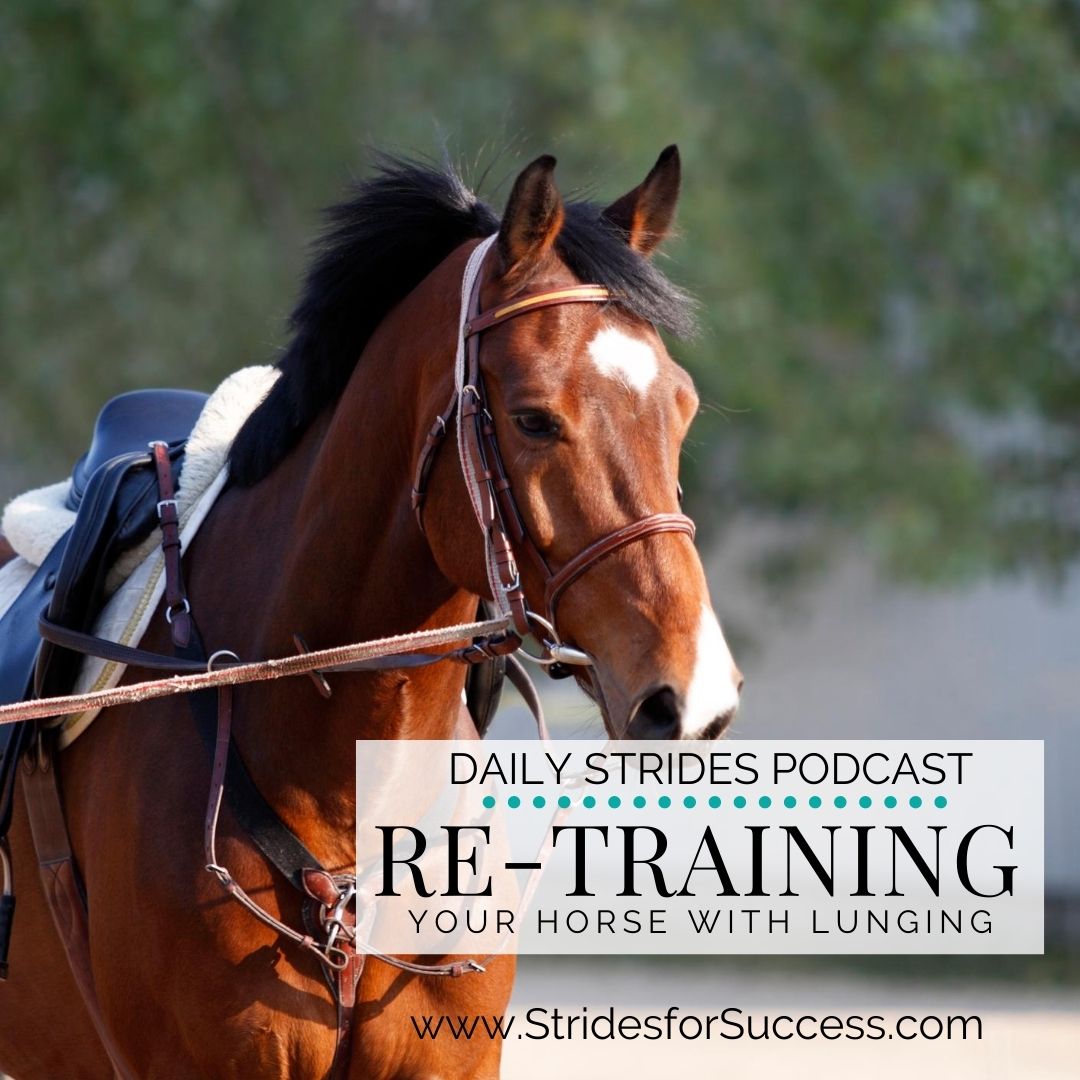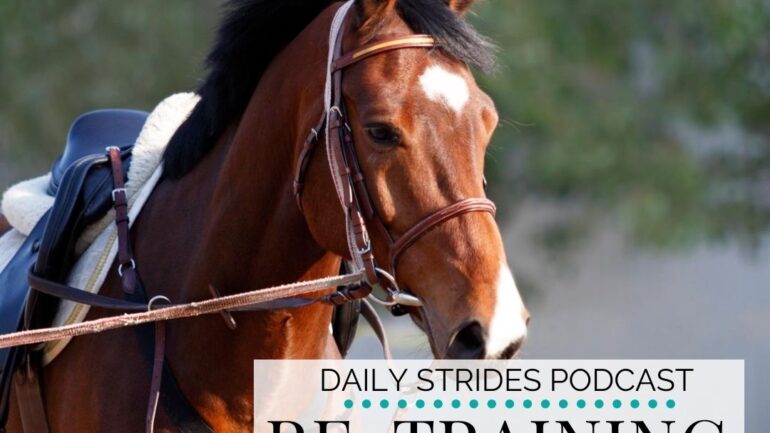Did you know that almost anything you can do from the saddle, with your horse, you can do from the end of the lunge line? And the words lunge line there are important. I often chat with riders who believe in free lunging or loose lunging. They are not lunging! Lunging is when you are using your aids, both natural and artificial, to actively improve your conversation with your horse through your aids.
And correct lunging is one of the best ways to begin re-training or re-schooling your horse, regardless of your abilities (or lack of abilities) when in the saddle.

So many riders struggle with re-training because their aids lack consistency when riding. They ‘think’ they are saying one thing to their horse, but meanwhile, their horse is hearing something completely different! Lunging removes this challenge.
When you lunging, you can clearly see – in real-time – how your horse responds to your aids. Not how you think he is responding. You take on the perspective of a trainer.
And you can do this in a few simple steps…
1 . Get Clear on What You Want to Improve
Do you find your head filled with what can seem like a million ideas when working with your horse? Every time you ask a question, you notice something else that needs ‘fixing’. And, being the diligent rider you are, off you go about ‘fixing’ that thing.
You’re jumping from thing to thing throughout the ride. And in the end, you actually have no idea what you were working on for the full 30 minutes…
Confusing, eh?! Now imagine how your horse feels when he doesn’t actually understand the first thing you set out to achieve, to begin with! When riding a horse who needs some re-training, it is important to have a clear intention for each interaction.
Figure out what you want to show your horse today? Then stick to that thing for the full session together!
2 . How Can You Effectively Communicate This to Your Horse on the Lunge?
So I’ve already said that anything you can say to your horse in the saddle, you can say on the lunge. Yes, it may take you time to refine your aids to the point where you can clearly communicate this to your horse, but it can be done. The trick is to begin thinking about ‘all’ of your aids.
It is tempting to rely on just one or two aids that work well. However, I am going to challenge you to begin thinking about all of your aids. Natural and artificial.
Some horses prefer a specific aid or combination of aids, others will differ. Your responsibility as the trainer is to identify what your horse currently understands and responds well to. Then using these aids to effectively communicate what you want from your horse.
3 . Ask the Question and Allow the Response
Once you have identified what you want and how best to ask that, the next part is to ask! Take action and ask the question of your horse as clearly and best you can. However, it is not enough to just ask. You have to give your horse time to respond to your question.
There is a big difference between a monologue and a conversation; listening for your horses response creates the conversation.
If it is not what you want, keep in mind that responsiveness can be an issue. If so, this is on you… Keep in mind that the response might be subtle. And often the lack of a response is the actual response. What is key here is that you are mindfully watching for and waiting for your horse to respond to your question. You are actively creating a space in the conversation for his response. This is a vital part of re-training your horse.
4 . Allow or Correct
From here, you have two choices regarding what to do next. You can allow your horse to do what it is he is doing. This is assuming that you are happy with his response and it is the one you wanted! Or you can correct him. What is important with both of these actions from you is the timing. It must be relevant.
Allowing can be enhanced with a positive response from you. A softening or releasing. A verbal response. Let your horse know that he was right and that was what you were looking for.
Remember, when you’re retraining your horse, he doesn’t really know what you want and what you don’t want. It is your responsibility to tell him when he gets things right. Consistently doing this will help produce the same results over and over again.
Correction is important if the response was not what you wanted. You have to tell him when it is not what you want. This way you then set everything up to ask the question again, differently and then again watching and either allowing or correcting again.
Simple corrections done in a timely fashion are the key to explaining to your horse what you want and what you don’t want. There is an example of this in the Daily Strides Podcast Episode for this post. You can play the episode at the top of this post.
5 . Rinse and Repeat
From here, you simply take note of what happened and repeat. What is important in the repeating is that you care mindfully changing your approach if your horse’s response was not what you wanted it to be. Think about what aids you are changing or how you can change the pressure you applied.
Your responsibility as a trainer is to continually refine your aids so that your horse can more clearly understand what you are saying.
This can only happen when you are present and conscious of how you are asking each question, and of how your horse is responding to everything you say.
Retraining your horse does not have to be difficult. In fact, the more simple the better.
Happy Lunging
Lorna
Additional Resources on This Topic
-
-
- “3 Days to Successful Lunging” Guided Audio Training
- 4 Essentials for Getting Started with Lunging
- Where is the Beginning with Your OTTB or Ex-Racehorse?
- Creating a Re-Training Program for Your OTTB or Ex-Racehorse
- Lunging for Riding
- Daily Strides Podcast
- Free Online Community for Equestrians focusing on Mindset
- Free Online Community for Equestrians re-schooling or re-training horses
-

